Global Central Nervous System Treatment Market - Comprehensive Data-Driven Market Analysis & Strategic Outlook
The global central nervous system treatment market evolved from a realm of isolated study to an established and specialist field devoted to the treatment of brain and spinal cord conditions. Its origin extends to the early twentieth century when neurological disorders like epilepsy and Parkinson's disease were studied almost entirely by observation medicine. Treatment was limited, generally experimental, and lacking the regulatory influence that characterizes contemporary drug creation. Over time, advances in medical neuropharmacology, as well as increasing public awareness of mental and neurological illness, started to converge and shape what would eventually become a particular and powerful healthcare sector.
- Global central nervous system treatment market size of around USD 125.2 Billion in 2025 at a growth rate of approximately 8.0% till 2032, with a potential to expand over USD 214.7 Billion.
- Neurodegenerative Disorders account for close to 27.5% market share, driving innovation and increasing applications through aggressive research.
- Major trends driving growth: Technological Advancements, Increasing Prevalence of CNS Disorders
- Opportunities are in: Increasing Demand for Personalized Medicine
- Key point: The market is predicted to grow exponentially in value over the ten years, offering gigantic growth prospects.
- In the late 1970s and early 1980s, the pharmaceutical industry began to appreciate the extent of neurological disease as a public health issue.
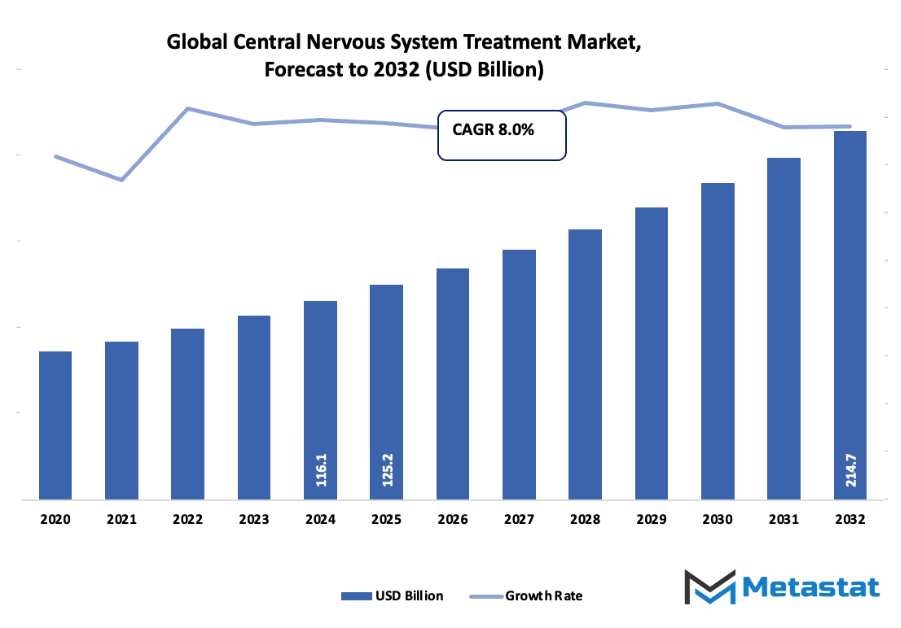
The finding of antidepressants, antipsychotics, and antiepileptics provided a landmark era that paved the way for cross-industry collaborative research. Governments and corporate entities started funding neurological sciences heavily through technological advancements in imaging and diagnostic technology. These allowed researchers to know how the brain functioned with greater accuracy, paving the way for the present global central nervous system treatment market structure. At the start of the twenty-first century, expectations from patients changed entirely. Patients no longer just looked for symptom management but also for enhanced quality of life and quicker recoveries. This change compelled firms to move beyond the conventional drug therapies and extend to biologics, gene therapies, and wireless health monitoring. Integration of artificial intelligence in drug development and targeted diagnostics will continue to revolutionize the method of drug formulation, testing, and delivery. Regulative systems have also changed the course of the industry.
In the past, variable approval processes would stop innovation in its tracks, but modern policies are increasingly becoming adaptable, allowing adaptive trial designs and accelerated evaluation processes for hopeful treatments.
Over the next few years, the global central nervous system treatment market will grow through partnership between technology innovators, clinicians, and regulators. Its journey from primitive neurology to sophisticated therapeutic ecosystems mirrors the way scientific determination and patient stewardship will shape brain and nerve disease treatment globally.
Market Segments
The global central nervous system treatment market is mainly classified based on Type of Disorder, Treatment Type, Drug Class, Distribution Channel.
By Type of Disorder is further segmented into:
- Neurodegenerative Disorders: Neurodegenerative disorders will be the demand drivers in the global central nervous system treatment market due to the growing prevalence of diseases like Alzheimer's and Parkinson's. Strategies involve delay of disease progression and improvement in the quality of life, and research is going to offer innovative solutions for these disorders.
- Psychiatric Disorders: Psychiatric disorders will continue to be the largest segment in the market because depression, anxiety disorders, and other psychiatric disorders are on the rise. Improved treatment modalities like medication and therapy will improve patient outcomes and permit long-term management.
- Neurovascular Diseases: Neurovascular diseases like aneurysm and stroke will play a major role in the market. The conditions focus on the restoration of normal blood flow with prevention of future complications, and hospitalization plays an important factor in treating the patients without any delay.
- Others: Other disorders of the Central Nervous System will continue contributing to the global market for Central Nervous System Treatment. Unusual or rare disorders will experience more focus in the areas of research, specialized treatment, and innovative solutions that target specific patient demand.
By Treatment Type the market is divided into:
- Treatment: Treatment will continue to be a top treatment category within the global central nervous system treatment market. Medications will address specific symptoms, treat chronic conditions, and retard disease progression, enabling the patient to live healthier and fewer long-term complications.
- Surgery: Surgical treatments will add to the market by providing treatment for diseases that cannot be cured with medication. More sophisticated surgical treatments will boost success rates and decrease healing time for patients with serious neurological disease.
- Therapy and Counseling: Therapy and counseling shall be one of the key drivers in the market. Non-pharmacological therapy targets behavioral, emotional, and cognitive disorders and guarantees the general mental and physical health of the patients.
- Others: Other therapies will also be a factor within the market. New methods, rehabilitation programs, and complementary therapies shall be alternative options for effective management of different neurological disorders.
By Drug Class the market is further divided into:
- Antidepressant: Antidepressants will continue to be a major contributor to the market. The medications will heal mood disorders, reduce depression and anxiety symptoms, and enhance the quality of life of patients.
- Analgesics: Analgesics will be a significant part of the market. The drugs will target pain arising from neurological disorders, giving relief and improved quality of life to the patients.
- Immunomodulators: Immunomodulators will lead certain of the market by treating immune-related neurological disorders. The drugs will modulate the immune system and treat diseases like multiple sclerosis.
- Interferons: Interferons will impact the market by developing treatments for long-term CNS conditions. These drugs will be able to manage disease progression and enhance patients' overall long-term condition of health.
- Decarboxylase Inhibitors: Decarboxylase inhibitors will continue to be an important drug class in the market. They will aid in the enhancement of neurotransmitter balance, mainly in movement disorders, and lead to enhanced symptom control.
- Other: Other classes of drugs will form part of the global central nervous system treatment market. New and emerging drugs will address rarer disorders and commit to innovation for neurological treatment strategies.
By Distribution Channel the global central nervous system treatment market is divided as:
- Hospital Pharmacies: Hospital pharmacies will be at the forefront of the global central nervous system treatment market. Hospitals will deliver specialized medicines and treatments to patients, and hospitals will deliver instant treatment for severe neurological diseases.
- Retail Pharmacies: Retail pharmacies will maintain their place in the market through providing low-cost medicine for routine treatment of acute and chronic neurological diseases. Convenience and coverage of treatment will be enhanced through the stores.
- Online Pharmacies: Online pharmacies will shape the market by providing medicines easily accessible. They will be handy, deliver at the right time, and let patients treat their neurological conditions from home.
|
Forecast Period |
2025-2032 |
|
Market Size in 2025 |
$125.2 Billion |
|
Market Size by 2032 |
$214.7 Billion |
|
Growth Rate from 2025 to 2032 |
8.0% |
|
Base Year |
2024 |
|
Regions Covered |
North America, Europe, Asia-Pacific, South America, Middle East & Africa |
By Region:
- Based on geography, the global central nervous system treatment market is divided into North America, Europe, Asia-Pacific, South America, and the Middle East & Africa.
- North America is further divided into the U.S., Canada, and Mexico, whereas Europe consists of the UK, Germany, France, Italy, and the Rest of Europe.
- Asia-Pacific is segmented into India, China, Japan, South Korea, and the Rest of Asia-Pacific.
- The South America region includes Brazil, Argentina, and the Rest of South America, while the Middle East & Africa is categorized into GCC Countries, Egypt, South Africa, and the Rest of the Middle East & Africa.
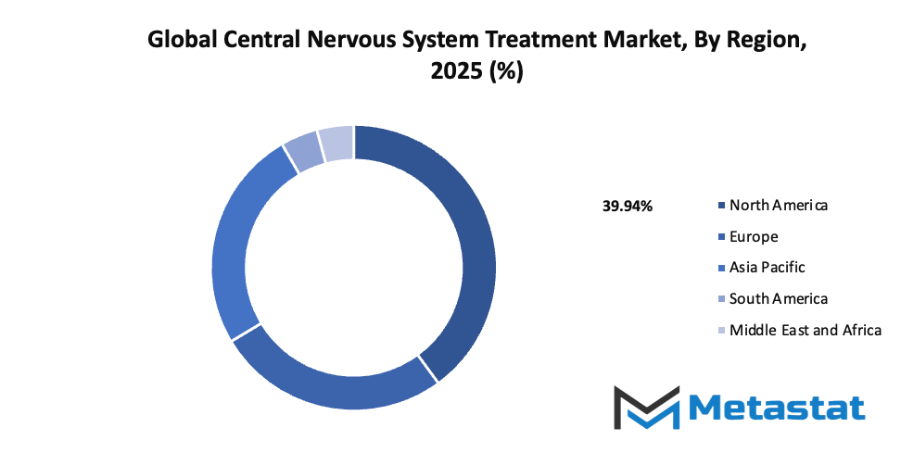
Growth Drivers
- Technological Advancements: Advanced technologies, including innovative drug delivery systems and neuroimaging tools, will improve treatment efficiency. Integration of digital solutions and AI-based monitoring will support faster diagnosis and patient management. Such developments will enhance treatment outcomes and overall patient care in the market.
- Increasing Prevalence of CNS Disorders: A rise in conditions such as Parkinson’s disease, Alzheimer’s disease, and multiple sclerosis will drive the global central nervous system treatment market. Aging populations and lifestyle changes will increase disease incidence. Greater focus on early detection and timely intervention will strengthen market demand.
Challenges and Opportunities
- Stringent Regulatory Approvals: Regulatory frameworks for CNS drugs are strict, requiring extensive clinical trials and approvals. These measures ensure patient safety but can delay market entry. Companies must navigate these processes efficiently while maintaining compliance to succeed in the market.
- High Treatment Costs: CNS therapies often involve expensive drugs and long-term care, making affordability a concern. High treatment costs can limit patient access and affect adoption rates. Efforts to reduce costs through insurance coverage, government support, or generic alternatives will influence market expansion.
Opportunities
- Growing Demand for Personalized Medicine: Personalized approaches in CNS treatment will improve patient outcomes and reduce side effects. Tailored therapies based on genetic and clinical profiles will gain importance. Increased research in targeted therapies and biomarker identification will strengthen adoption and growth in the global central nervous system treatment market.
Competitive Landscape & Strategic Insights
The global central nervous system treatment market will witness a dynamic and highly competitive environment, shaped by both established international leaders and emerging regional players. Companies such as Pfizer Inc., Johnson & Johnson Services, Inc., Novartis AG, Sanofi, Merck & Co., Inc., GlaxoSmithKline plc, AstraZeneca, Mitsubishi Tanabe Pharma Corporation, Eli Lilly and Company, Abbott Laboratories, Biogen, Teva Pharmaceutical Industries Ltd., AbbVie Inc., Sunovion Pharmaceuticals Inc., F. Hoffmann-La Roche Ltd, Bayer AG, and Otsuka Pharmaceutical Co., Ltd. play critical roles in driving innovation, shaping patient care, and expanding market reach. The competitive landscape in this sector is characterized by rapid advancements in research, strategic partnerships, and evolving regulatory frameworks that will influence future market dynamics.
Strategic insights will increasingly focus on precision therapies, digital health integration, and the development of novel molecules targeting previously unmet needs. Companies will invest in technologies that improve patient outcomes while streamlining costs, fostering both global and regional expansion. Emerging players will leverage agility and localized expertise to capture niche markets, challenging established firms to continuously innovate and adapt. Mergers, acquisitions, and collaborations are likely to remain key strategies as companies seek to strengthen portfolios and accelerate the introduction of new treatments.
Market size is forecast to rise from USD 125.2 Billion in 2025 to over USD 214.7 Billion by 2032. Central Nervous System Treatment will maintain dominance but face growing competition from emerging formats.
Looking ahead, the market will be influenced by growing demand for personalized care, advances in artificial intelligence for drug discovery, and shifts in healthcare infrastructure across different regions. Companies will need to adopt forward-looking approaches, balancing research-driven growth with market responsiveness to maintain competitive advantage. The combination of established expertise, emerging innovation, and strategic foresight will shape the evolution of the market, making careful analysis of the competitive landscape and strategic insights essential for long-term success.
Report Coverage
This research report categorizes the global central nervous system treatment market based on various segments and regions, forecasts revenue growth, and analyzes trends in each submarket. The report analyses the key growth drivers, opportunities, and challenges influencing the global central nervous system treatment market. Recent market developments and competitive strategies such as expansion, type launch, development, partnership, merger, and acquisition have been included to draw the competitive landscape in the market. The report strategically identifies and profiles the key market players and analyses their core competencies in each sub-segment of the global central nervous system treatment market.
Central Nervous System Treatment Market Key Segments:
By Type of Disorder
- Neurodegenerative Disorders
- Psychiatric Disorders
- Neurovascular Disorders
- Others
By Treatment Type
- Medication
- Surgery
- Therapy and Counseling
- Others
By Drug Class
- Antidepressant
- Analgesics
- Immunomodulators
- Interferons
- Decarboxylase Inhibitors
- Other
By Distribution Channel
- Hospital Pharmacies
- Retail Pharmacies
- Online Pharmacies
Key Global Central Nervous System Treatment Industry Players
- Pfizer Inc.
- Johnson & Johnson Services, Inc.
- Novartis AG
- Sanofi
- Merck & Co., Inc.
- GlaxoSmithKline plc
- AstraZeneca
- Mitsubishi Tanabe Pharma Corporation
- Eli Lilly and Company
- Abbott Laboratories
- Biogen
- Teva Pharmaceutical Industries Ltd.
- AbbVie Inc.
- Sunovion Pharmaceuticals Inc.
- F. Hoffmann-La Roche Ltd
- Bayer AG
- Otsuka Pharmaceutical Co., Ltd.
WHAT REPORT PROVIDES
- Full in-depth analysis of the parent Industry
- Important changes in market and its dynamics
- Segmentation details of the market
- Former, on-going, and projected market analysis in terms of volume and value
- Assessment of niche industry developments
- Market share analysis
- Key strategies of major players
- Emerging segments and regional growth potential



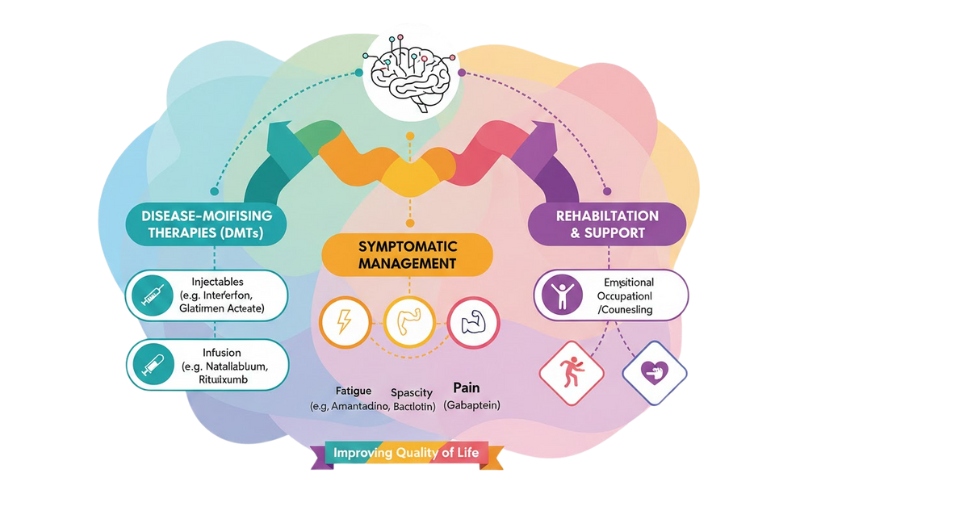
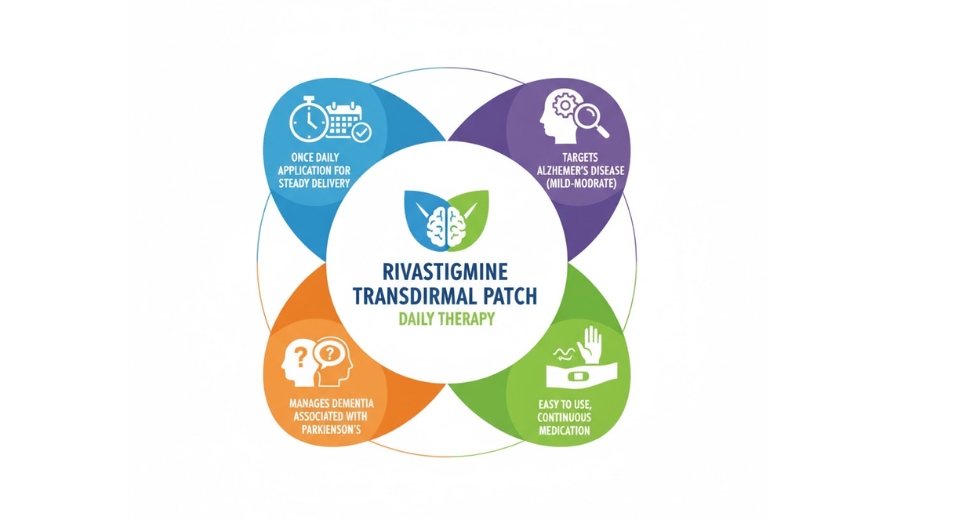
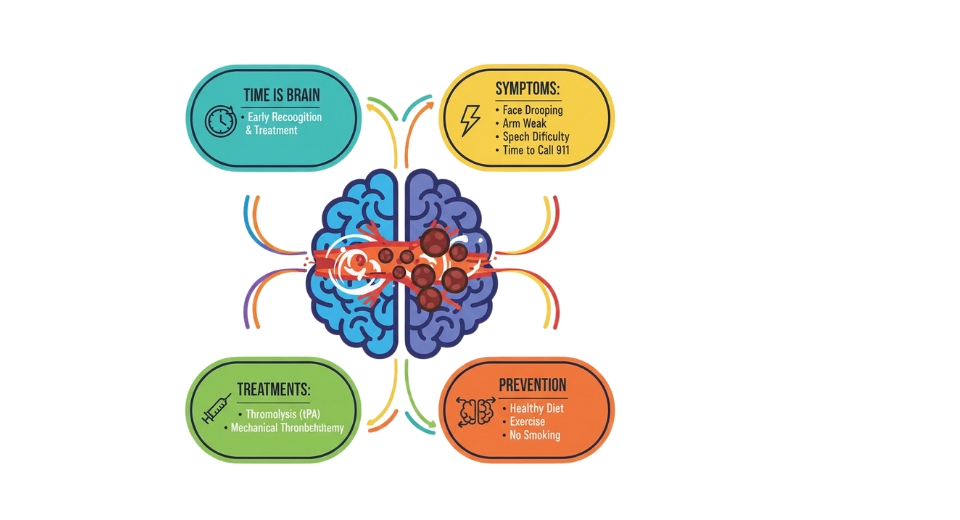
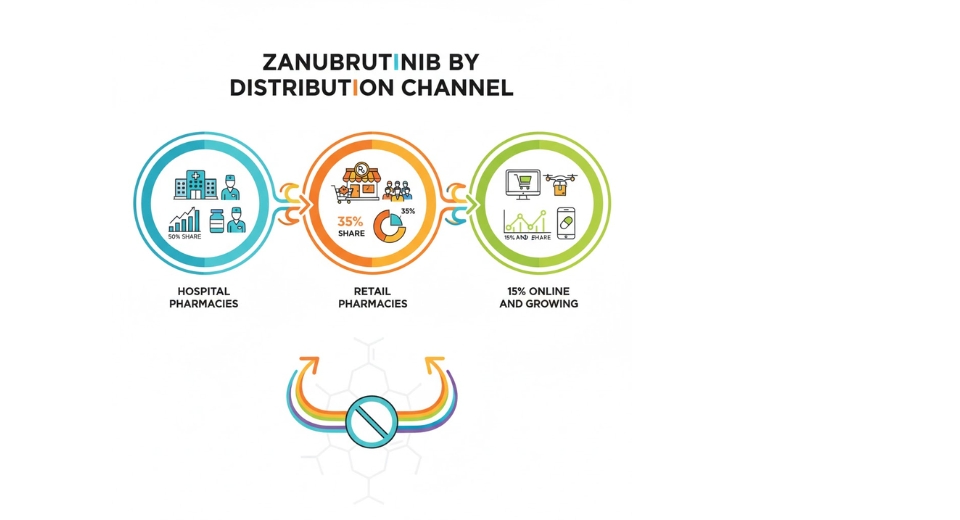

 US: +1 3023308252
US: +1 3023308252






